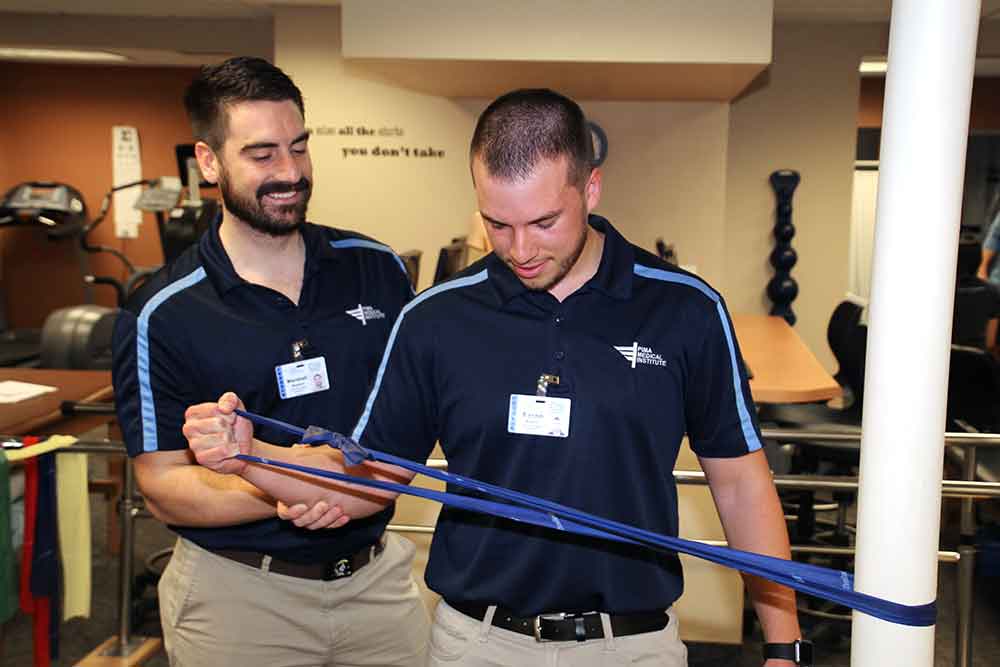If you like the hands-on side of healthcare and want to help people through rehabilitation and therapy, you should consider a career as an Occupational Therapy Assistant (OTA) or Physical Therapist Assistant (PTA). But, how do you know which one is right for you? We break down the differences between the two careers below.
1. OTAs and PTAs treat different types of patients.
Physical therapy patients get treated for specific injuries from sports, surgeries, accidents or illnesses that have impacted their movement and functions. The different types of patients could be athletes, infants struggling to reach developmental milestones or someone who is recovering from a surgery.
Occupational therapy patients have a hard time doing daily tasks for everyday activities, such as making a meal, brushing their teeth and washing the dishes. Patients can include people of all ages with different types of disabilities or anyone who has lost skills due to injuries.
2. There are different types of movements and exercises for each healthcare profession.
Physical therapist assistants use different types of techniques, exercises and movements to help improve a patient’s strength and mobility, prevent or limit permanent disabilities and relieve pain.
Occupational therapy assistants provide treatments that help people perform daily tasks. This can include helping someone who has lost a limb learn how to use special equipment to walk or shower. OTAs help patients gain more confidence and adapt to a disability or permanent injury rather than gain strength back from a sports injury. OTAs also help children with developmental disabilities, such as autism spectrum disorder, learn social and play skills.

3. They use different methods of treatment.
PTAs help patients with therapy actions, which includes helping people heal or correct physical injuries by increasing exercise or restoring the body’s ability to move and prevent disability. PTAs help patients regain muscle strength, range of motion, joint mobility and flexibility.
OTAs help patients with therapy interventions, which includes activities of daily life (ADLs) or plans for patients to help them learn how to live a more independent life with confidence. ADLs include feeding yourself, going to the bathroom, brushing your teeth and hair, getting dressed, bathing, walking and more. There are also instrumental activities of daily living (IADLs), which include activities such as managing finances, shopping, driving, housework and using different technology.
4. The personality traits and skill sets differ for an OTA vs. a PTA.
While both professions need to show compassion and respect for their patients along with requiring good communication skills, a positive attitude, problem solving and patience, they do require some different skill sets. For PTAs, they need to have good stamina and physical strength along with good motivational skills to help encourage patients to keep moving.
OTAs must also be an expert motivator, especially when the patient becomes frustrated with learning a new ADL or IADL. They also should possess good people-reading skills to gauge how patients are feeling during their therapy sessions.
No matter which career path you decide to take, you will be making a difference helping people through therapy and rehabilitation. Begin toward your future career as an Occupational Therapy Assistant or Physical Therapist Assistant with us today.
Our Seattle Campus Physical Therapist Assistant instructor, Andrew Yanez, explains the difference between OTAs and PTAs.



